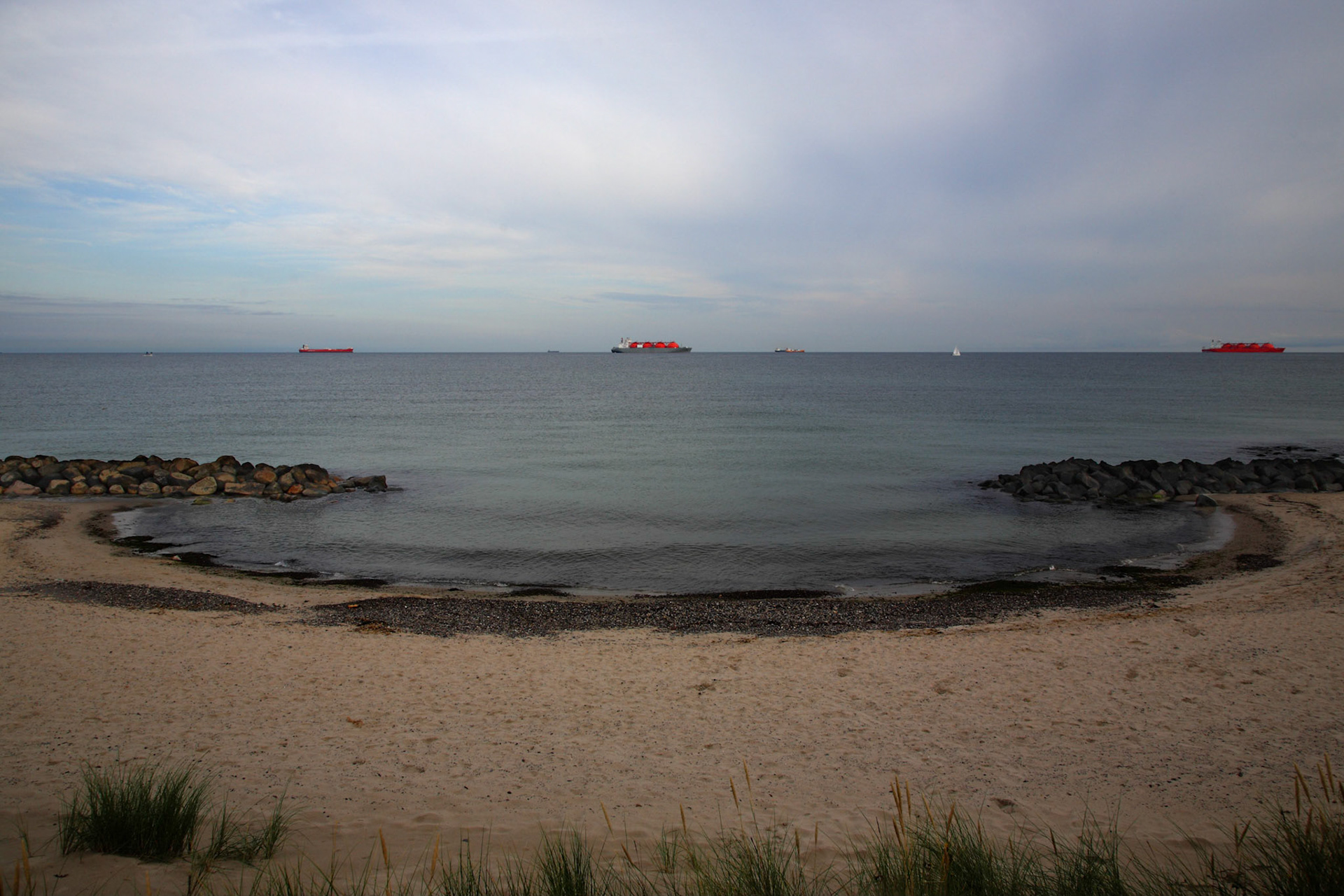Between 1942 and 1944 the Nazi Germany built an extensive system of coastal defensive structures along the western coast of Europe called The Atlantic Wall”. It is an impressive line of fortifications stretching from Nordkap to the Pyrenees, which aimed to destroy allied landing crafts before they could unload. Every single visible and invisible landing site was strongly fortified with minefields, tank traps, barbed wire, mobile units, and reinforced concrete positions in many sizes and dizzying numbers.
They also built defensive fortifications and positions along the coast of Jutland, the northernmost point of Denmark. From there, they shot at every enemy ship that attempted to sail through the Kattegat.
On the border between the Kattegat and the Skagerrak sits a small city named Skagen, whose very tip is a sandy, shifting headland known as Grenen. The occupation forces heavily fortified this area with installations comprising both a coastal battery and a radar station. They built defensive structures in this area as early as 1940 and then extended, in steps, in 1943-44. It played a unique role in defending Frederikshavn harbor, a strategical staging post on the way to Norway.
Parts of the bunkers are overgrown today: some were removed, others claimed by the sea, but several remain, and their number is still impressive. Many of them are open to the public.
Among those that survived the injuries of time, there are also the emplacements for the 122 mm battery, now situated directly on the beach as a result of land erosion.
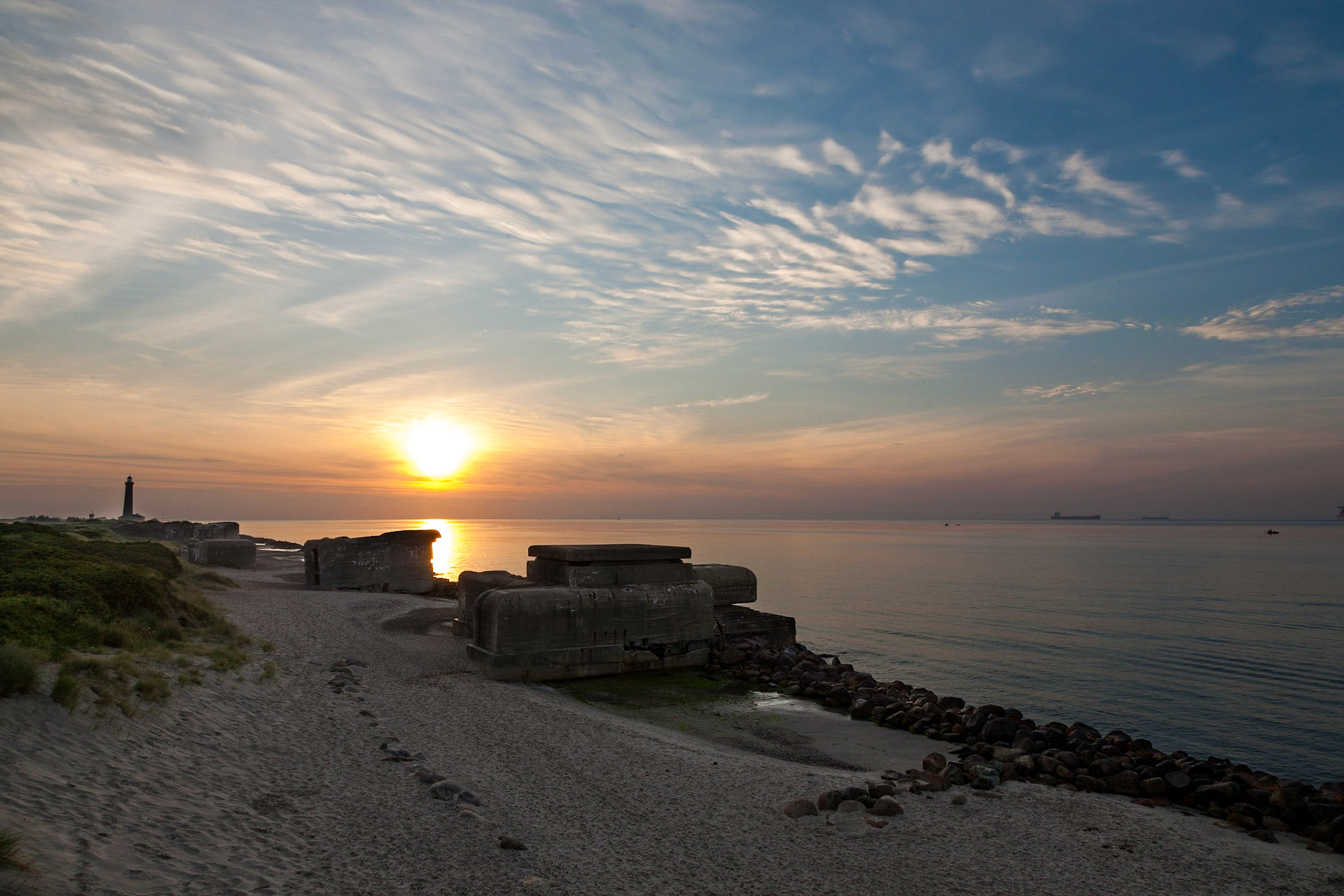
Skagen - Nordjylland
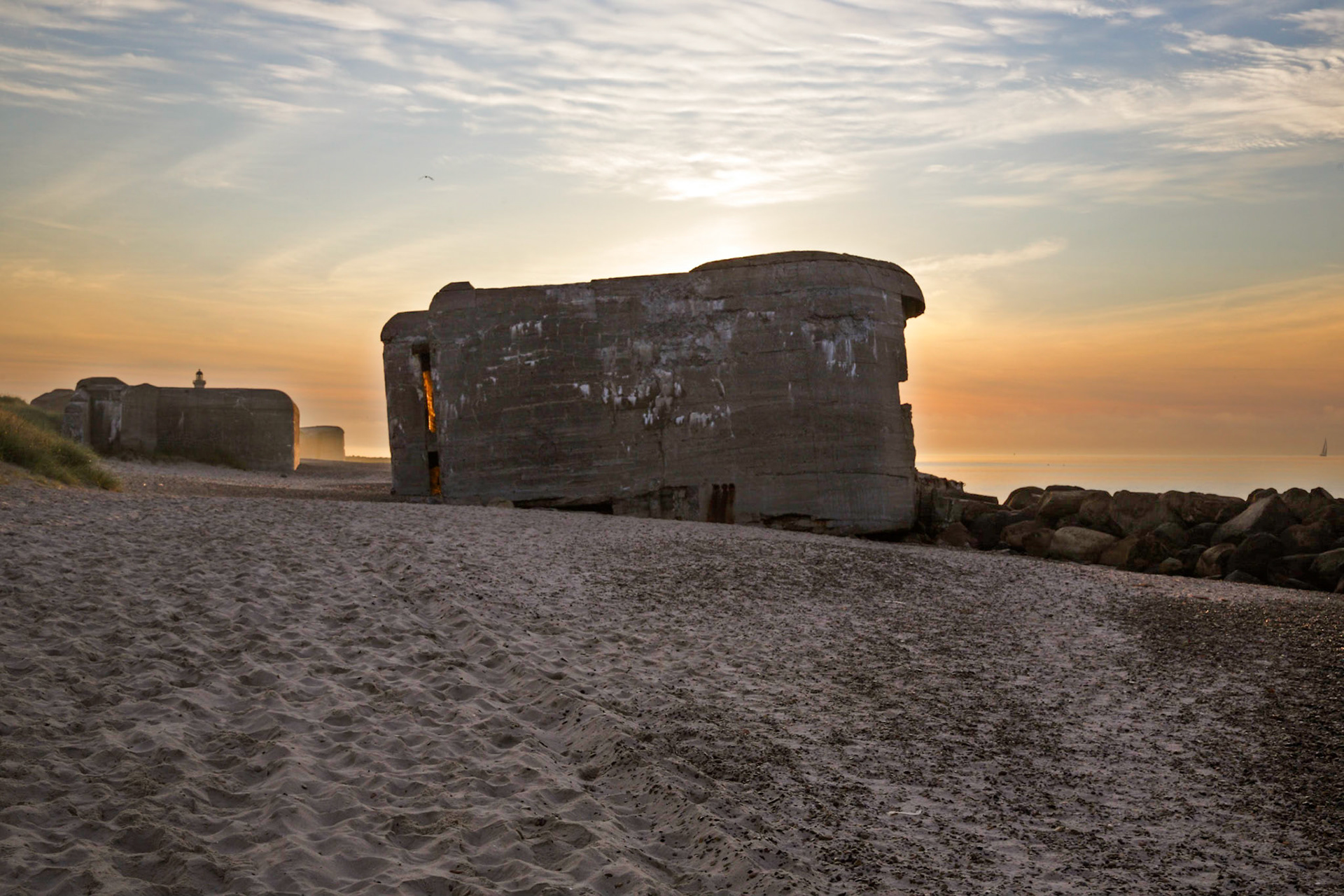
Skagen - Nordjylland
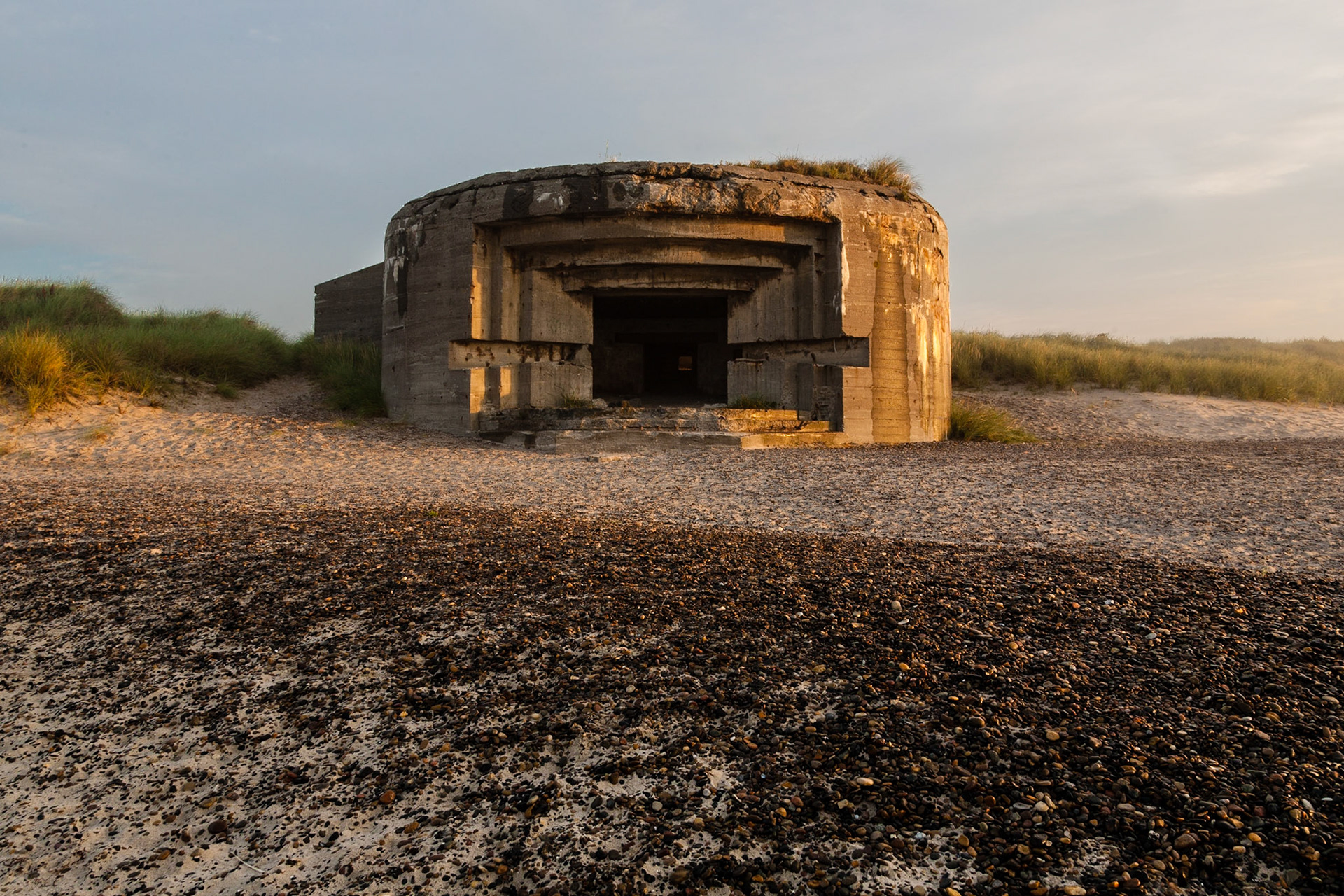
Skagen - Nordjylland
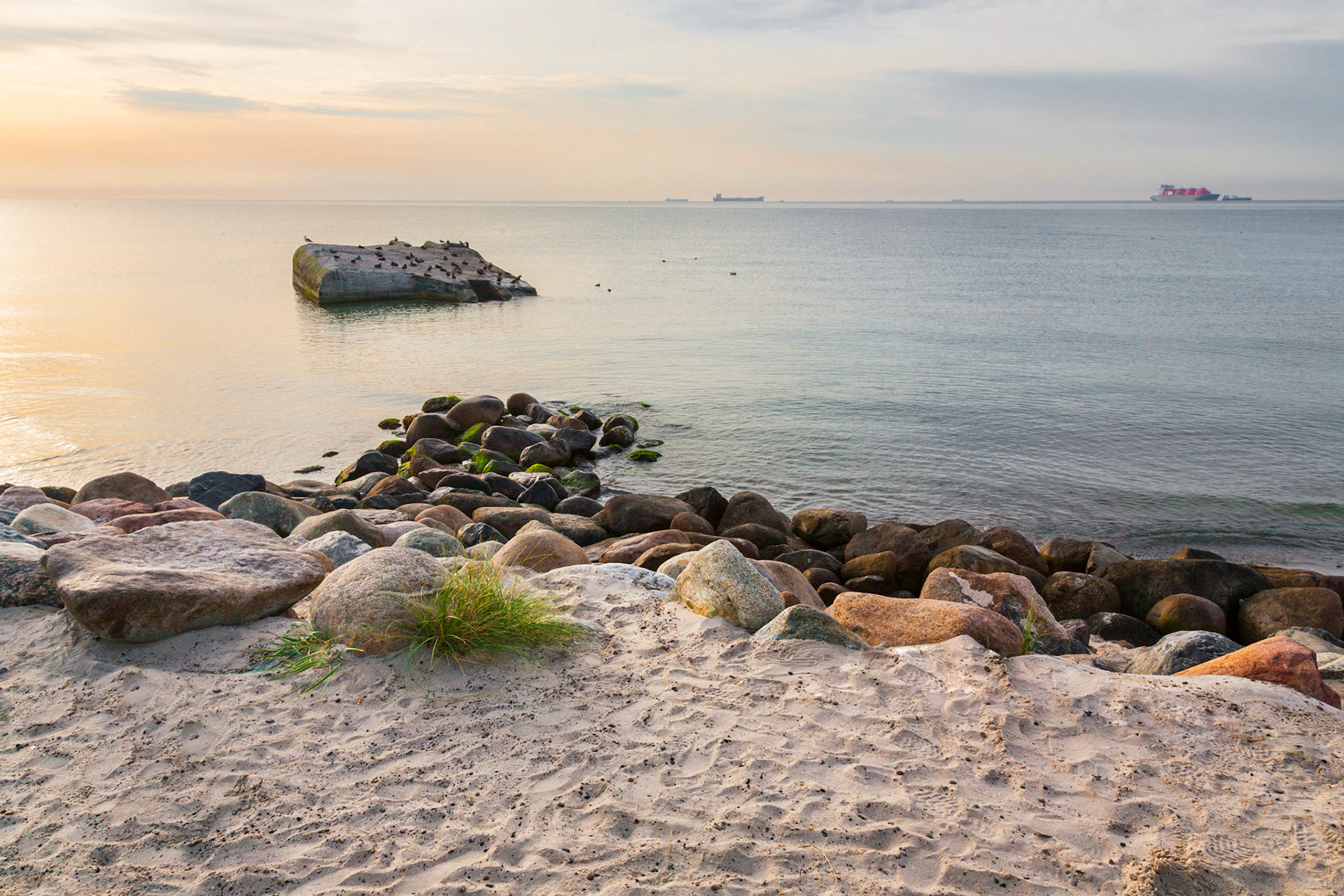
Skagen - Nordjylland
